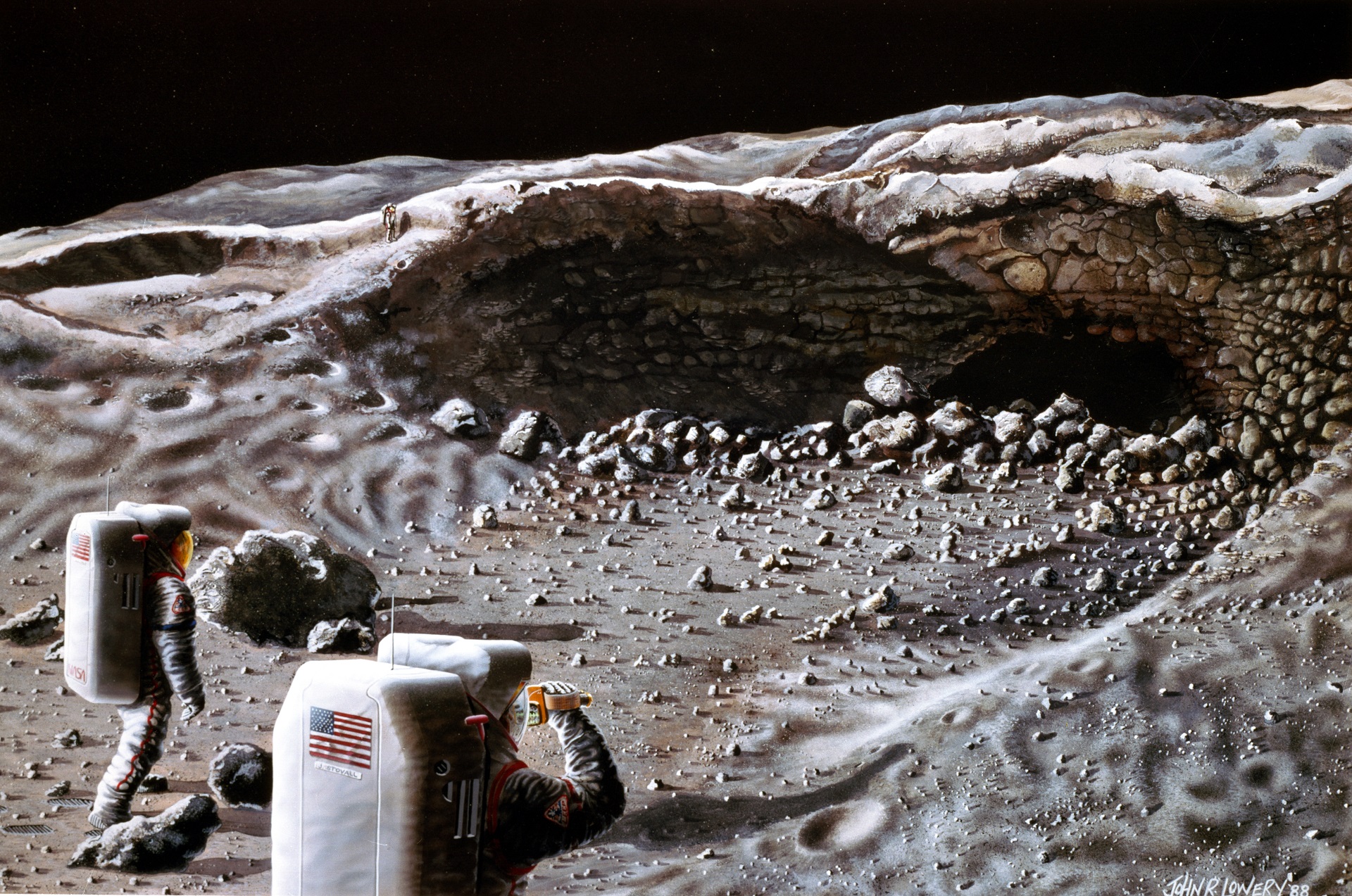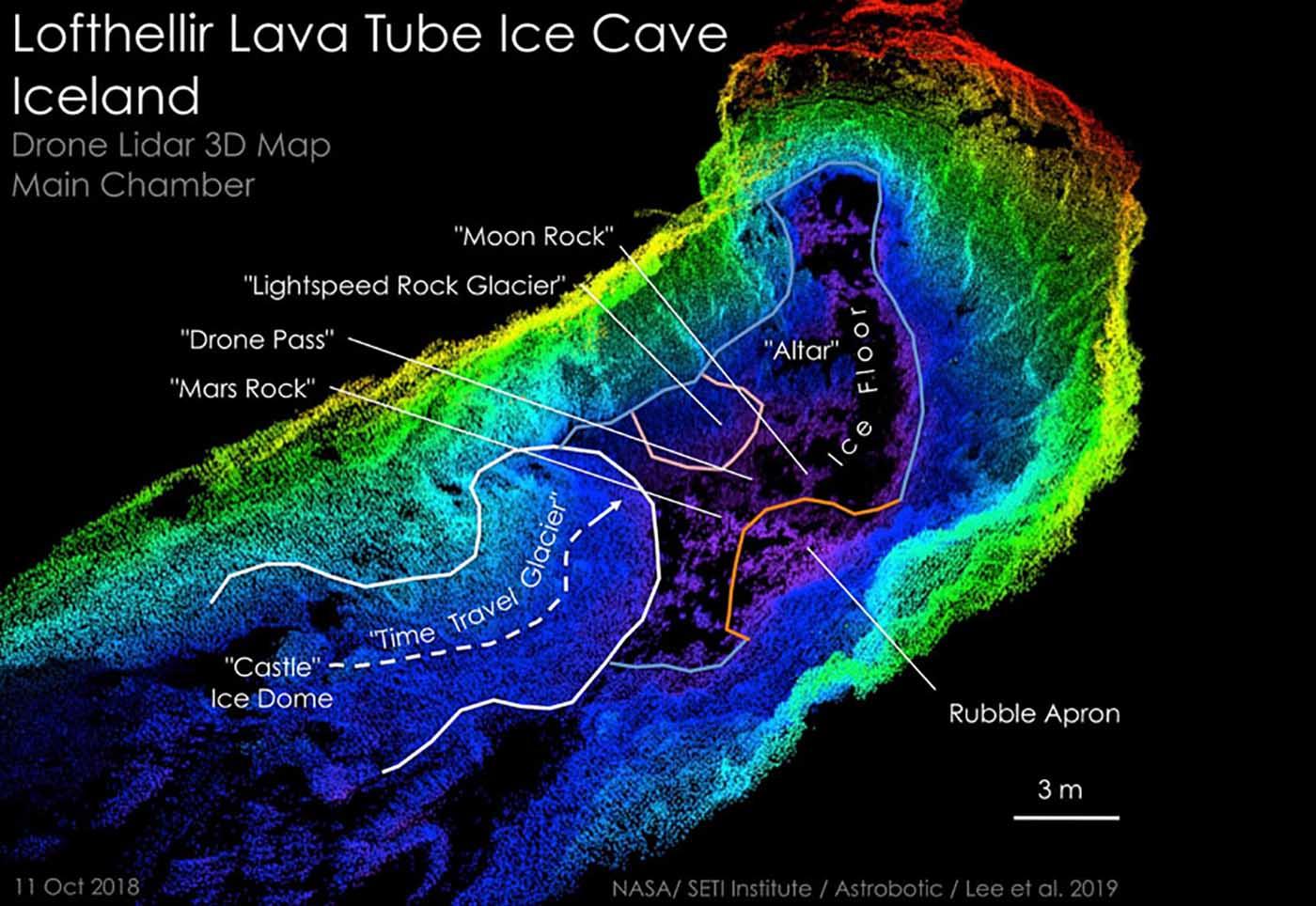Lunar Caves and Their Significance

Nasa moon caves – Lunar caves are geological formations found on the Moon, created by volcanic activity and subsequent erosion. These caves provide a unique environment that is protected from the harsh conditions on the lunar surface, making them potential havens for future human exploration and scientific research.
Geological Formations and Characteristics
Lunar caves are typically formed by the collapse of lava tubes, which are channels through which molten lava once flowed. Over time, the lava tubes cooled and solidified, forming a hollow interior. These caves can be several kilometers long and hundreds of meters wide, creating vast and complex underground spaces.
The geological characteristics of lunar caves vary depending on their formation and location. Some caves are lined with smooth, glassy walls, while others have rough and jagged surfaces. The temperature and humidity within the caves can also vary significantly, depending on their depth and exposure to the Sun.
Potential Scientific Value, Nasa moon caves
Lunar caves offer immense scientific value due to their unique and protected environment. They may contain pristine samples of lunar material that have been shielded from the harsh conditions on the surface, including cosmic radiation and solar wind.
Exploring lunar caves could provide valuable insights into the geological history of the Moon, including its volcanic activity and the processes that shaped its surface. Additionally, caves may contain evidence of past or present water ice, which could be a crucial resource for future human exploration.
Challenges and Risks
Exploring lunar caves presents several challenges and risks that need to be carefully considered. The extreme conditions on the Moon, including the lack of atmosphere and the presence of radiation, pose significant hazards to astronauts.
Additionally, navigating lunar caves can be difficult and dangerous due to their complex and often unstable structures. The potential for cave-ins and other hazards must be carefully assessed and mitigated before any exploration attempts are made.
Future Missions and Technologies: Nasa Moon Caves

NASA has ambitious plans for future moon missions, including the Artemis program, which aims to return humans to the lunar surface by 2025. The program will involve a series of missions, beginning with Artemis 1, an uncrewed flight test of the Space Launch System (SLS) rocket and Orion spacecraft. Artemis 2 will be the first crewed flight of the SLS and Orion, and Artemis 3 will land the first woman and the next man on the Moon.
NASA is also developing new technologies for lunar cave exploration. These technologies include:
- Lunar Cave Mapping and Imaging System (LCMS): This system will use lasers to map the interiors of lunar caves and create 3D models of their structures.
- Lunar Cave Rover: This rover will be designed to explore the interiors of lunar caves and collect samples of their rocks and soil.
- Lunar Cave Habitat: This habitat will be designed to provide a safe and habitable environment for astronauts exploring lunar caves.
These technologies will help NASA to explore the interiors of lunar caves and learn more about their potential for future human habitation.
NASA’s moon caves, with their potential for uncovering secrets of the universe, have captured the imagination of scientists and the public alike. While we eagerly await the next chapter in this lunar exploration, let’s not forget the informative and entertaining discussions on morning joe , where experts delve into the latest scientific discoveries and their implications for humanity.
As we continue to unravel the mysteries of the moon caves, such conversations will undoubtedly shed light on the uncharted territories that lie before us.
The enigma of NASA’s moon caves remains unsolved, leaving us to ponder the secrets they may hold. As we gaze up at the celestial tapestry, our thoughts wander to earthly concerns. The recent outbreak of colorado bird flu serves as a sobering reminder of the fragility of our ecosystems.
Yet, as the stars twinkle above, we find solace in the knowledge that the pursuit of knowledge, both celestial and terrestrial, continues to drive us forward, propelling us towards a deeper understanding of the vast universe and our place within it.